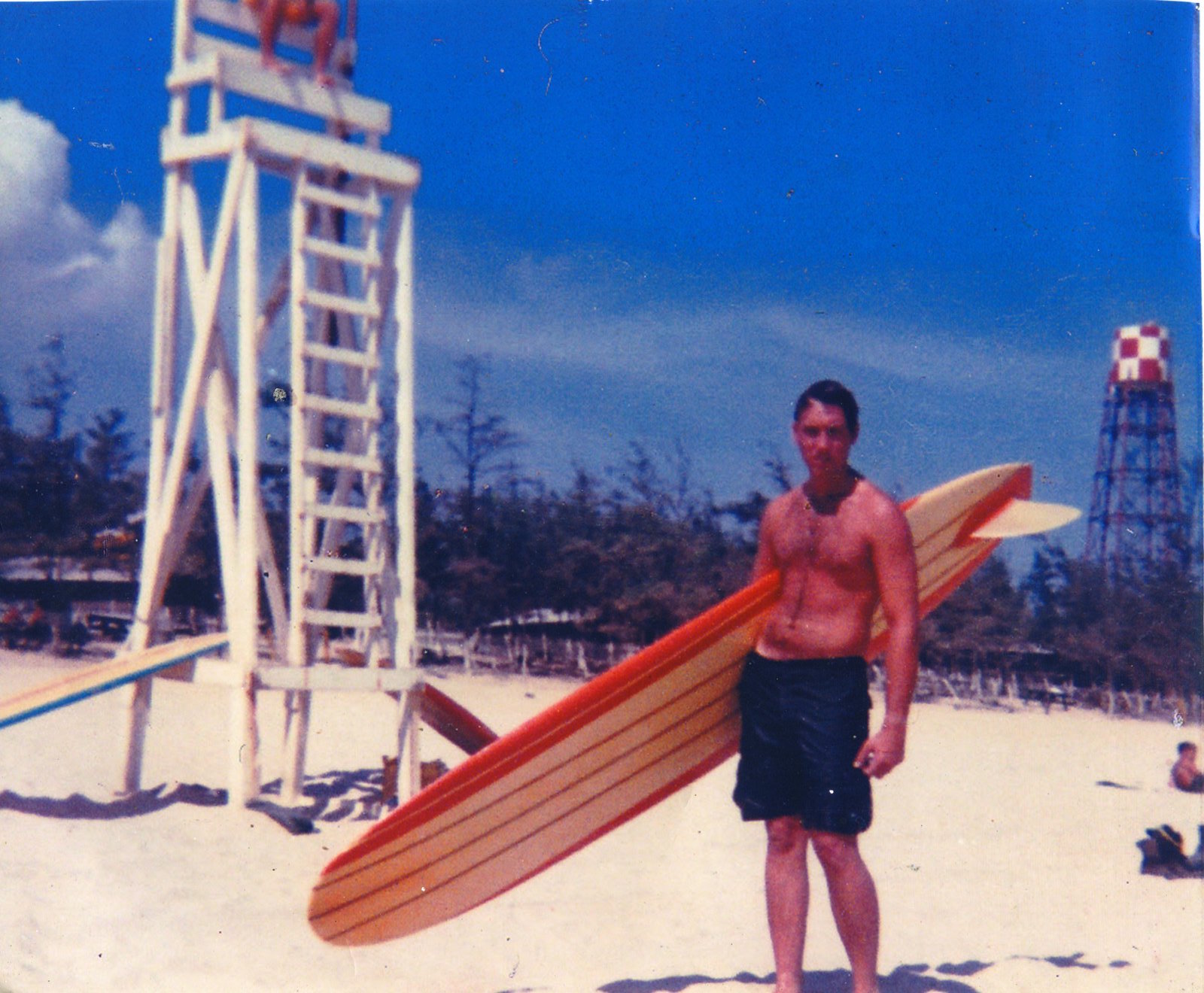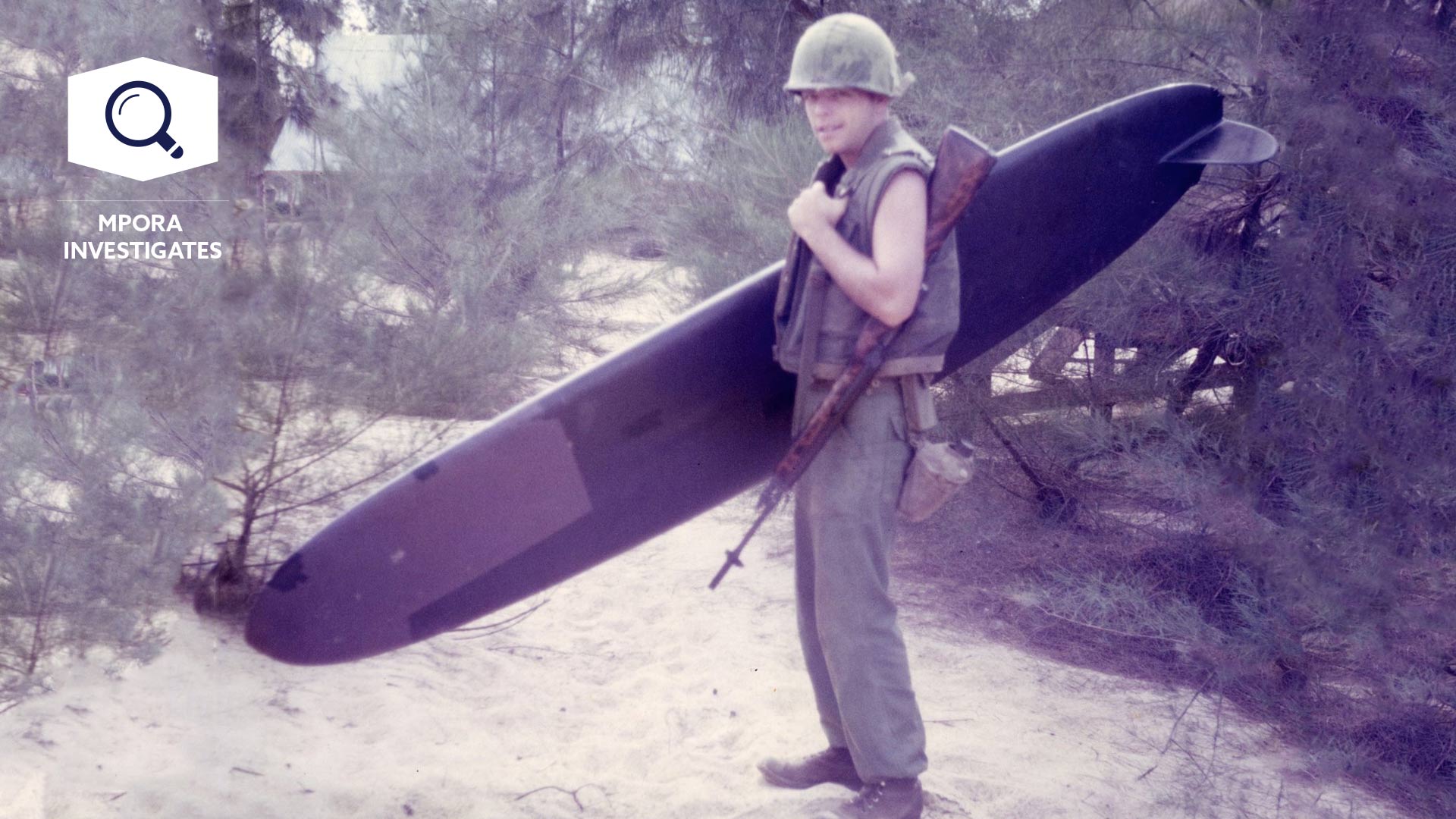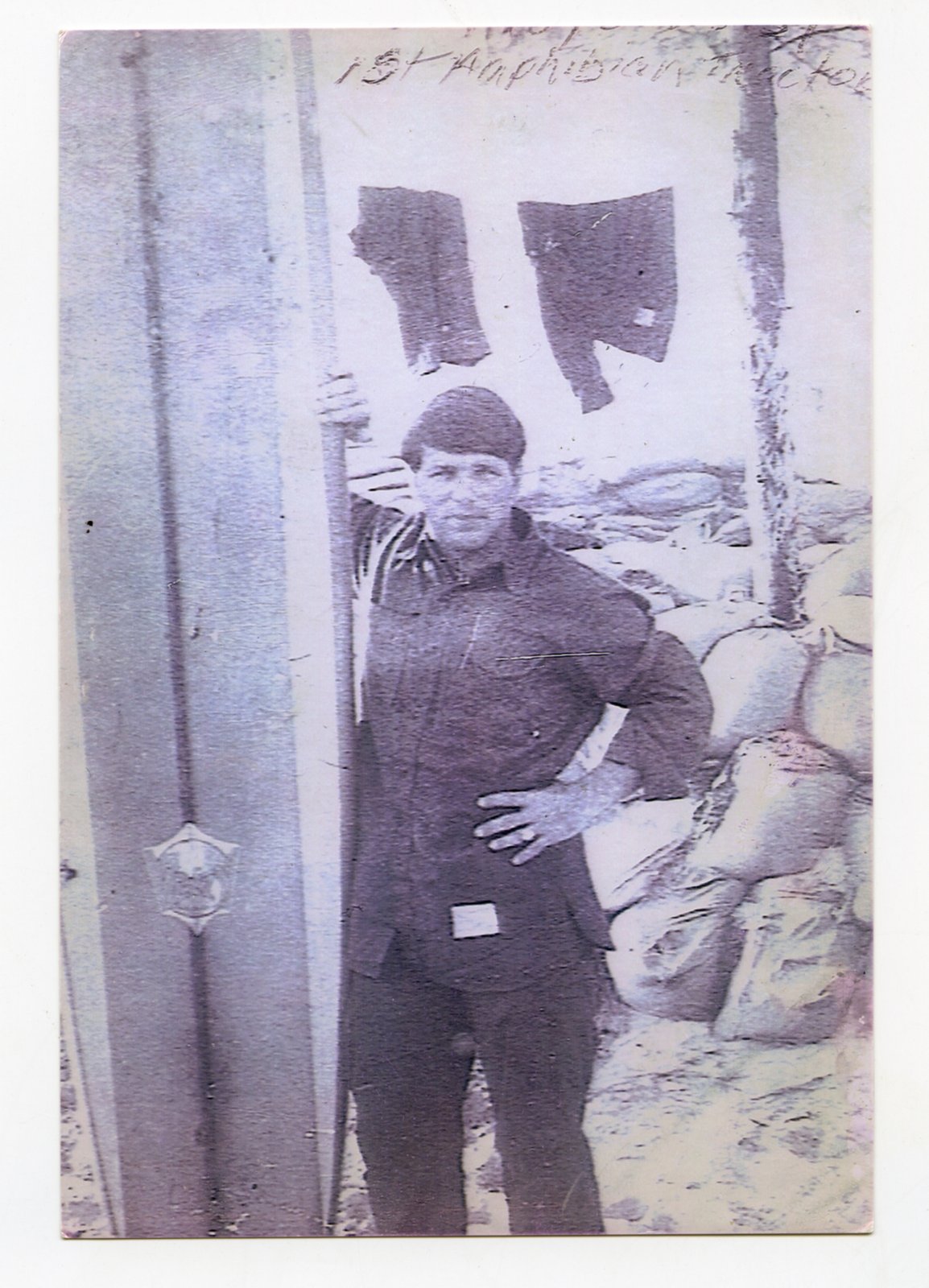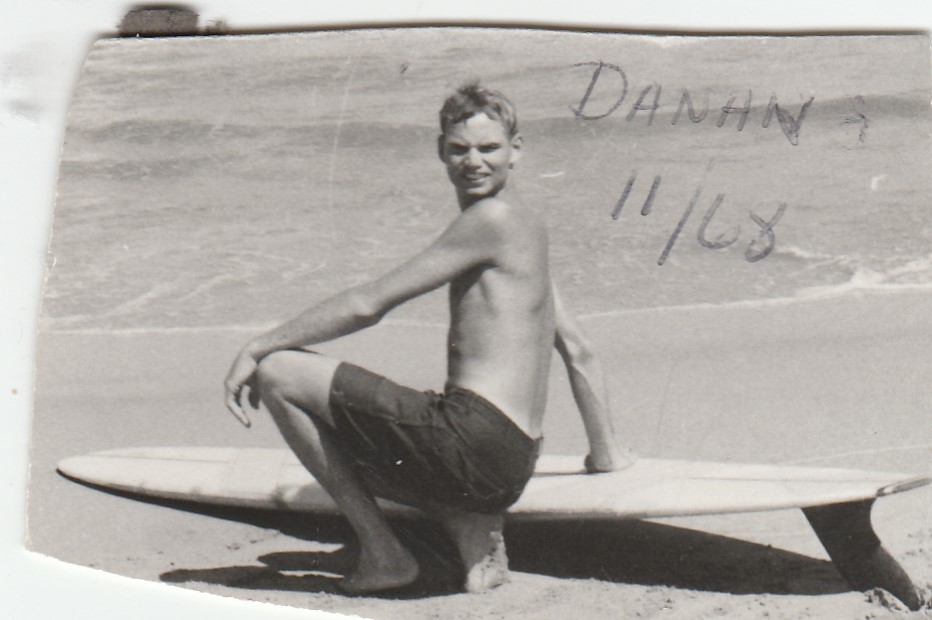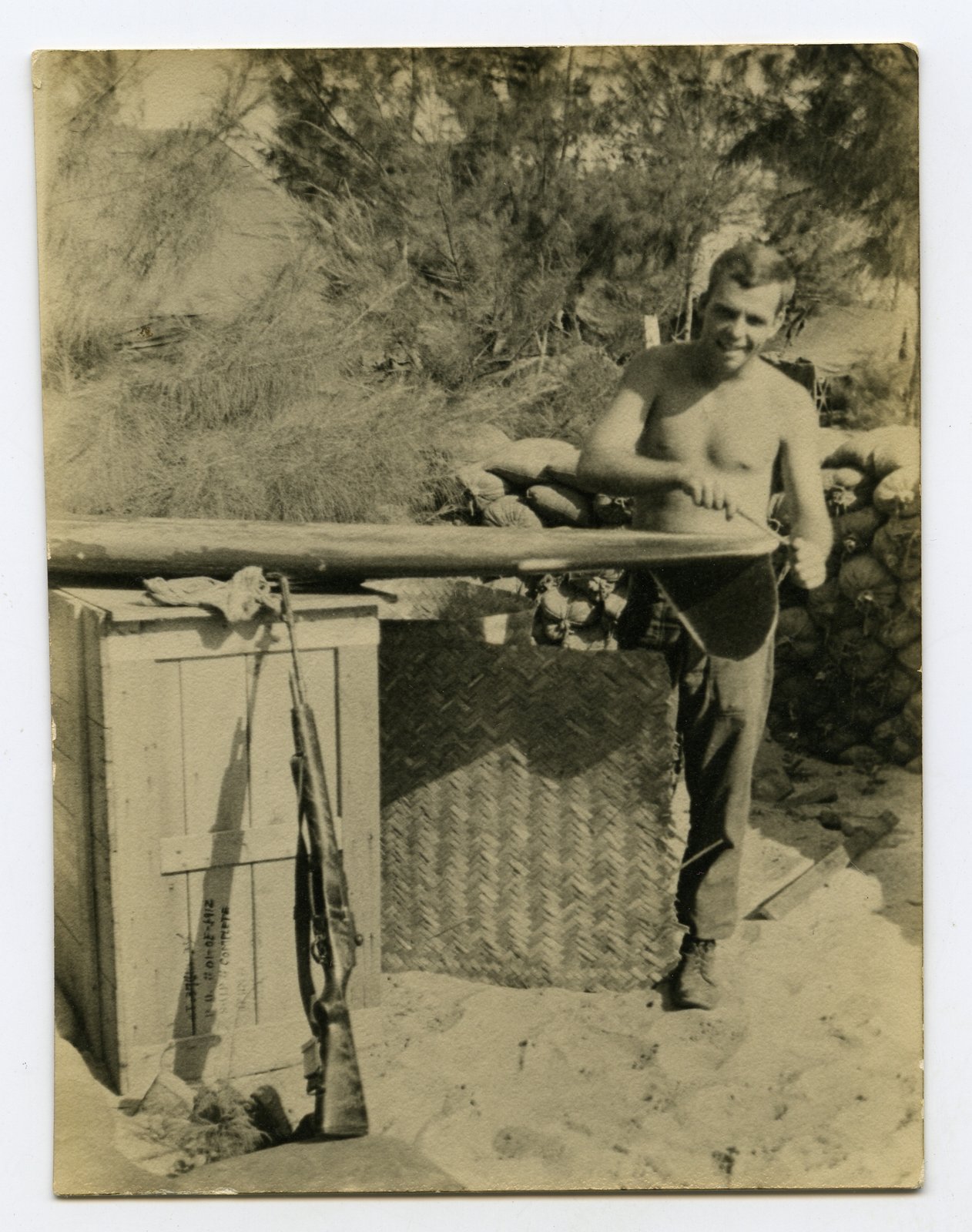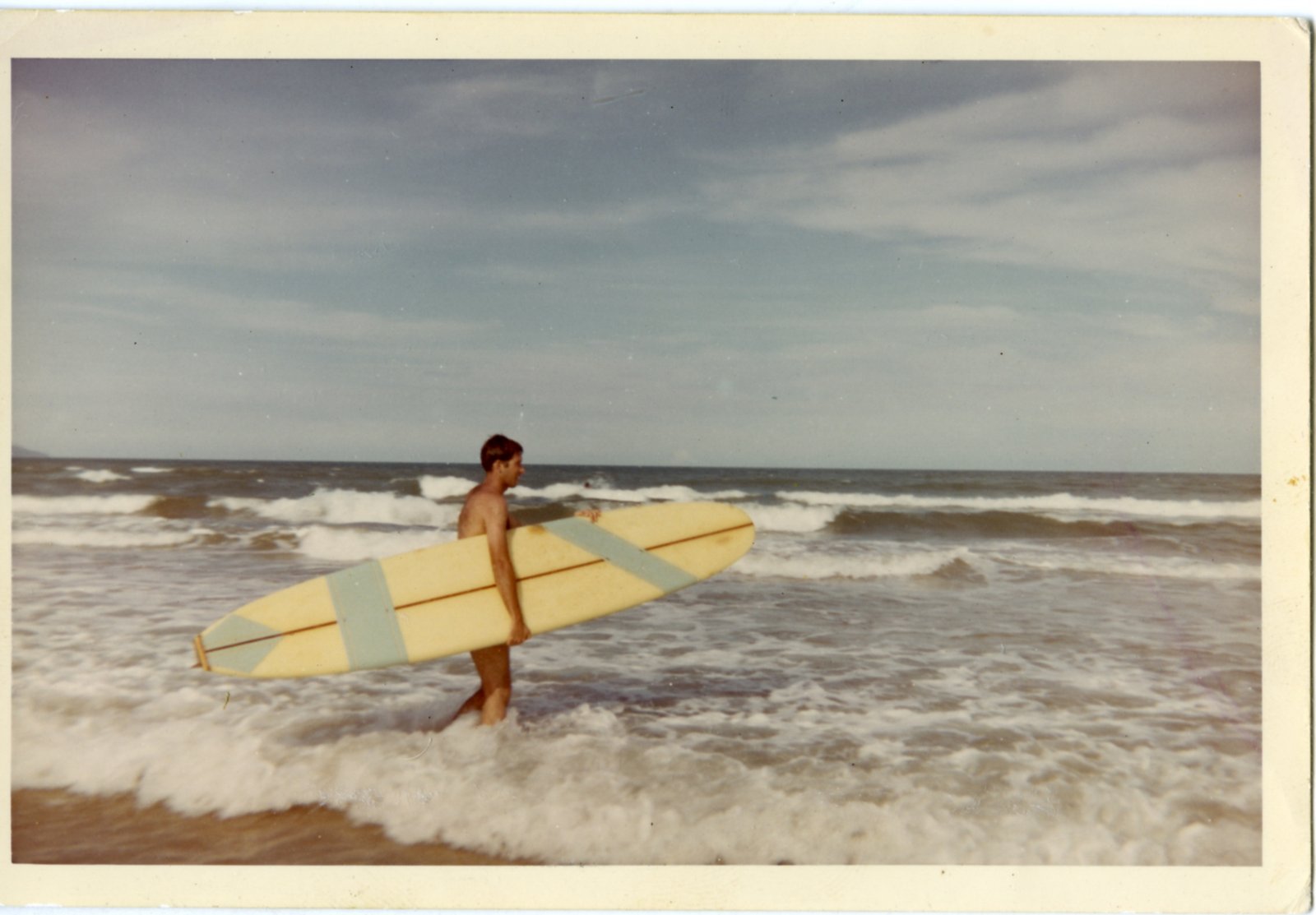Words by Jade Bremner
During and after the Vietnam War a group of soldiers found a way to break free from the atrocities of the frontline – through surfing and surf culture. Seventy-one-year-old Vietnam veteran Rick Thomas is known for being one of the founding fathers of paddle boarding, but what many don’t know is that he’s also a Post Traumatic Stress Disorder councillor, and a firm believer that surfing can treat trauma.
“I’ve been surfing for 65 years,” says Thomas, who was born and learned to surf in Waikiki, Honolulu. Surfing is in his bones, he says: “My mother went to school with the original Beach Boys, she was a tandem surfer and an incredible athlete.” In Hawaiian culture the ocean has a regenerative quality, claims Thomas: “All the warriors in Polynesian culture were part of the ocean – it was their playtime, but it also challenged them and healed them.”
Tanned and toned, Thomas is covered in ancient Hawaiian warrior body art, but one of his tattoos stands out. It’s a surfboard crossed with a M-16 rifle and is bordered by: “China Sea Surf Club 1964-1975” – his tribe during the Vietnam War. Serving in the Navy’s River Assault Group, Thomas was stationed in Chu Lai in the middle of Vietnam’s 2,000-mile coastline.
